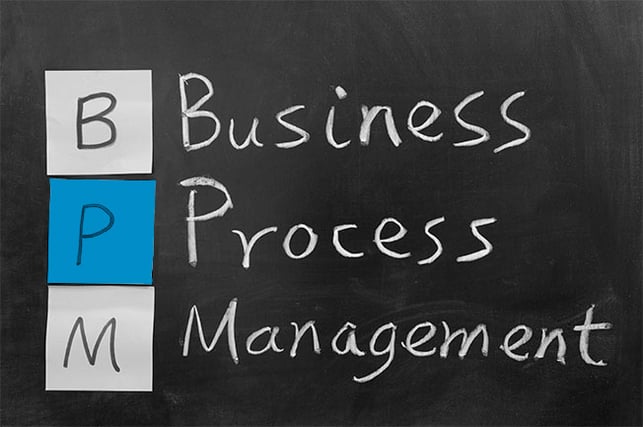Sometimes the senior sponsor for a Business Process Management (BPM) system leaves the organisation partway through its implementation. On other occasions the team responsible for quality or improvement in an organisation are clear that implementing BPM is the way to achieve a key objective, but they need to convince the leadership team.
In both these instances - and on similar occasions when trying to get senior buy-in and support - it is tempting for the project team to focus on the BPM system; explaining how it works and what it can do. However what they really need to do is explain what strategic goal it will help to achieve or what problem it will solve.
The purpose of this article is to help with this explanation.

Firstly what is Business Process Management (BPM)?
If you Google this question, a variety of definitions are returned; the two I find most useful are:
Business process management (BPM) is a field in operations management that focuses on improving corporate performance by managing and optimising a company's business processes. Theodore Panagacos (25 September 2012). The Ultimate Guide to Business Process Management: Everything You Need to Know and How to Apply It to Your Organization.
and
"The discipline of managing processes (rather than tasks) as the means for improving business performance outcomes and operational agility. Processes span organisational boundaries, linking together people, information flows, systems and other assets to create and deliver value to customers and constituents." Gartner. "Business process management (BPM)".
Neither of these are the explanation to make to your leadership team, but there are some key phrases to focus on:
- “improving corporate performance”
- “improving business performance outcomes and operational agility”
- “create and deliver value to customers”
What leadership team doesn’t want to do this?
But the question remains, what problem does Business Process Management solve?
Lead with the corporate objective
Identify the strategic initiatives that BPM will support. Capture these as documented in your corporate plan and lead your business case with them.
Then show the link between achieving these and “managing and optimising a company's business processes”.
It is really important to use the language that your leadership team have agreed to and signed off, but strategic objectives are very likely to be around:
- Increasing revenue
- Reducing waste
- Reducing costs
- Delivering more value
These are all problems that BPM solve.
Other problems that Business Process Management (BPM) solve
Other problems that BPM solve are more specific, but may well be a corporate objective:
- Return to business-as-usual following a merger or acquisition
- Business and IT alignment (to support implementation of an ERP system for example)
- Knowledge retention
- Process control
- Risk management
- Restructure of the organisation
- Business transformation or change
On occasion the decisions may already have been taken to approach a problem in a certain way:
- Implementation of Lean or continual improvement
- Quality standard accreditations (for example ISO and TickIT)
- Adherence to a best practice model (for example EFQM Excellence Model)
And all that is needed is for the link to be made between achieving this and BPM.
On other occasions a specific problem has been identified and how BPM solves it is what should be explained:
- Lack of a consistent way of working
- The need for standardisation between department
- The need to eliminate single points of failure
- A requirement for support for training and induction
Start with the place that your audience have already reached and take your explanation from there.
How does BPM solve these problems?
When addressing your leadership team, keep focused on just the problem that they are interested in solving, and explain:
Business Process Management enables an organisation to:
- Establish what is currently happening, how predictably and why
- Measure how efficiently the process is working
- Gather information to understand where waste and inefficiency exist and their impact
- Develop new improved processes to address the issue
Or in other words:
Business Process Management is a way to capture a model of how an organisation works (the AS-IS). Once this is in place, improvements can be modelled (the TO-BE options) and once the best one is determined, the improvements can be made.
The cost of inactivity
Tread cautiously with this one, but one other thing that you could add, if appropriate to your audience, is the potential cost of not addressing the issue. Could it be a quality failure that could end up in the news? If so the damage to your organisation’s reputation would far far outweigh the cost of addressing it now.
Related articles:
What is the cost of quality failure?
Written by Emma Harris
Emma was Operations Director for Triaster for nearly 20 years, during which time as well as learning and perfecting her BPM and process improvement skills, she honed her inbound marketing expertise. She now runs D2e - Designed to engage - which designs and develops bespoke, engaging, HubSpot CMS websites, that help your entire company to grow and scale. She is delighted to still be delivering Triaster's marketing, whilst also helping other companies turn their websites into their hardest working asset.

